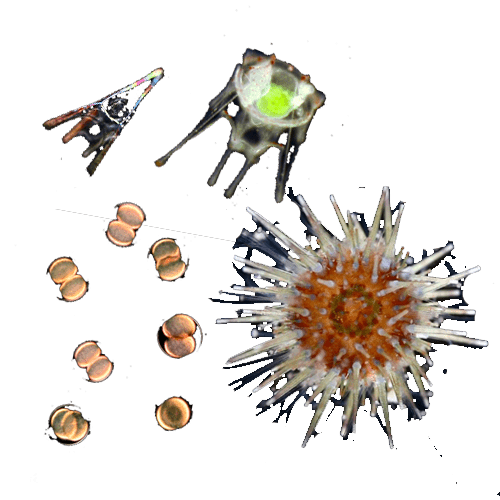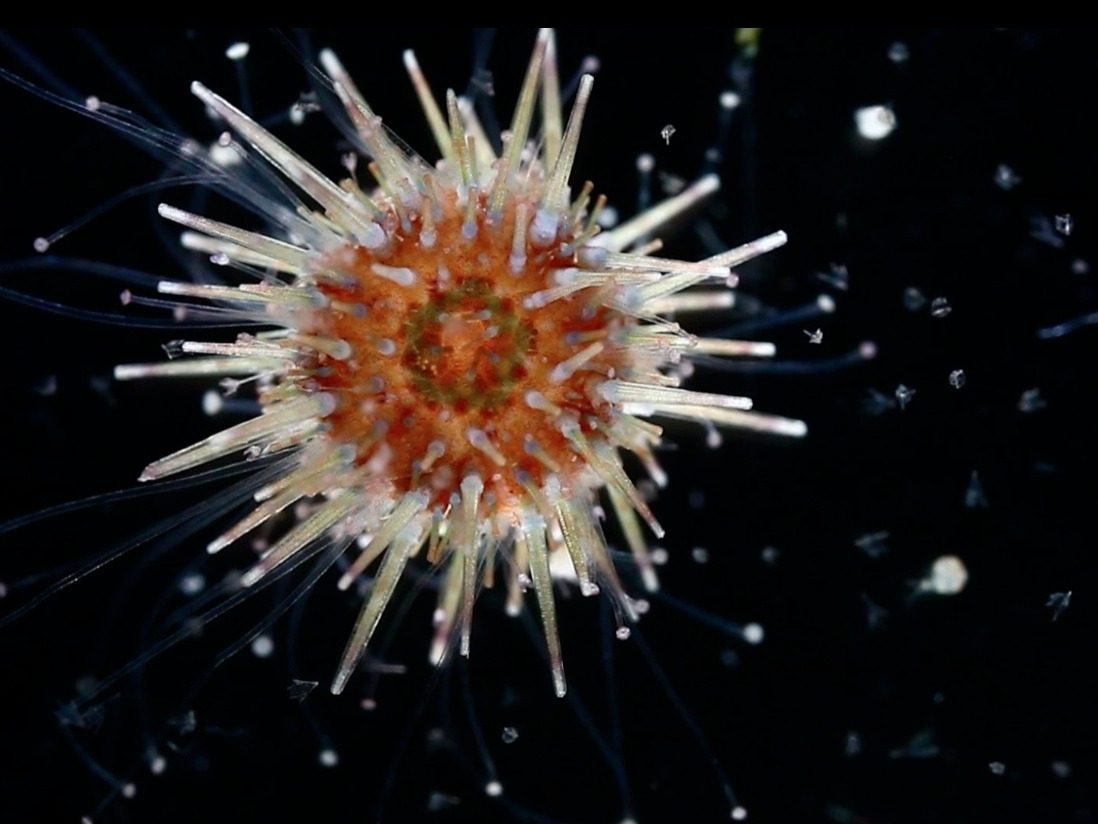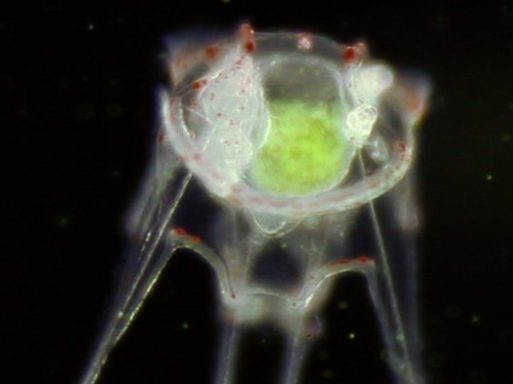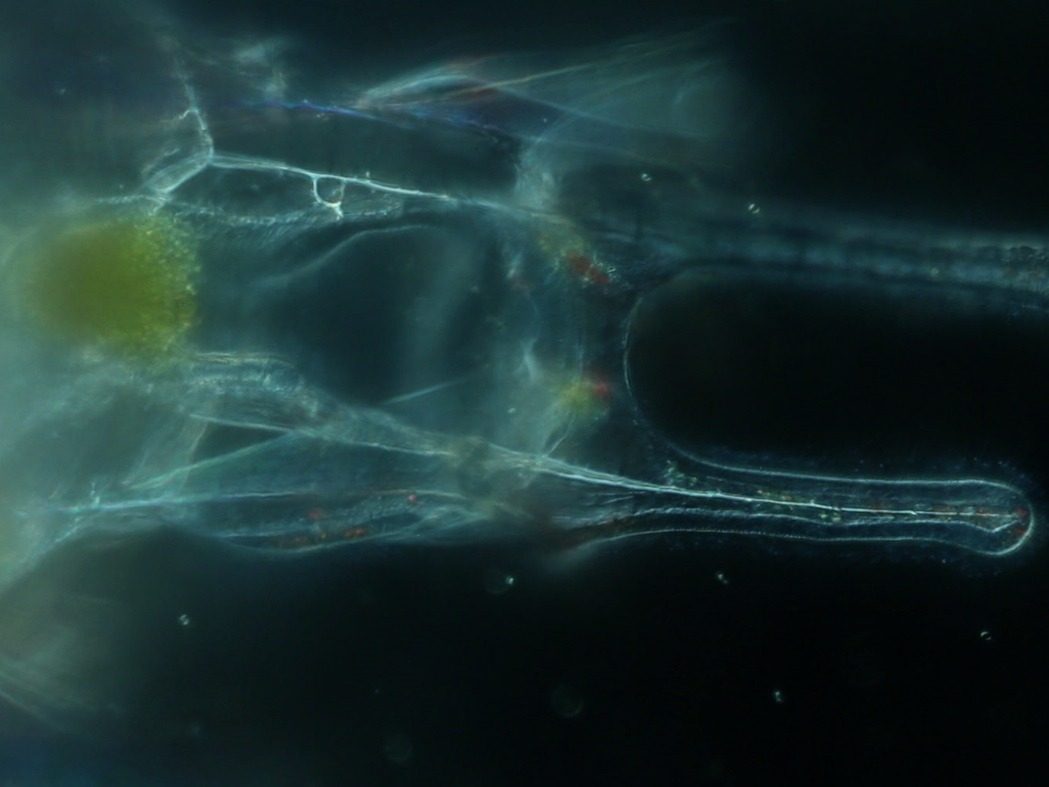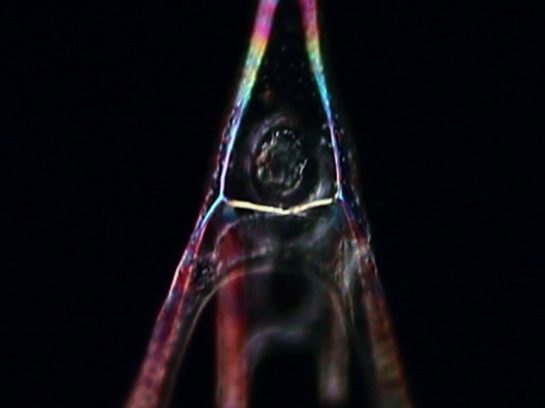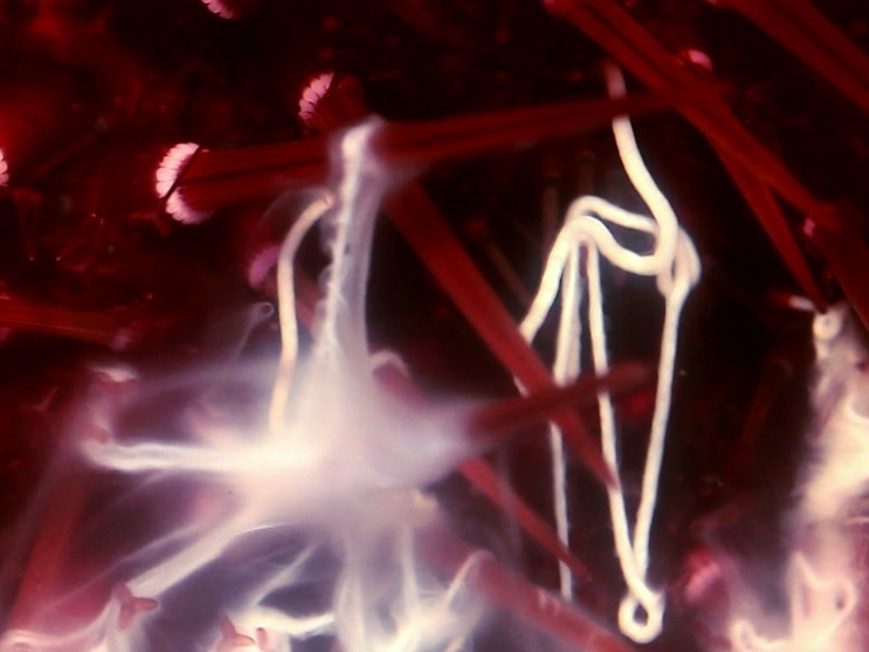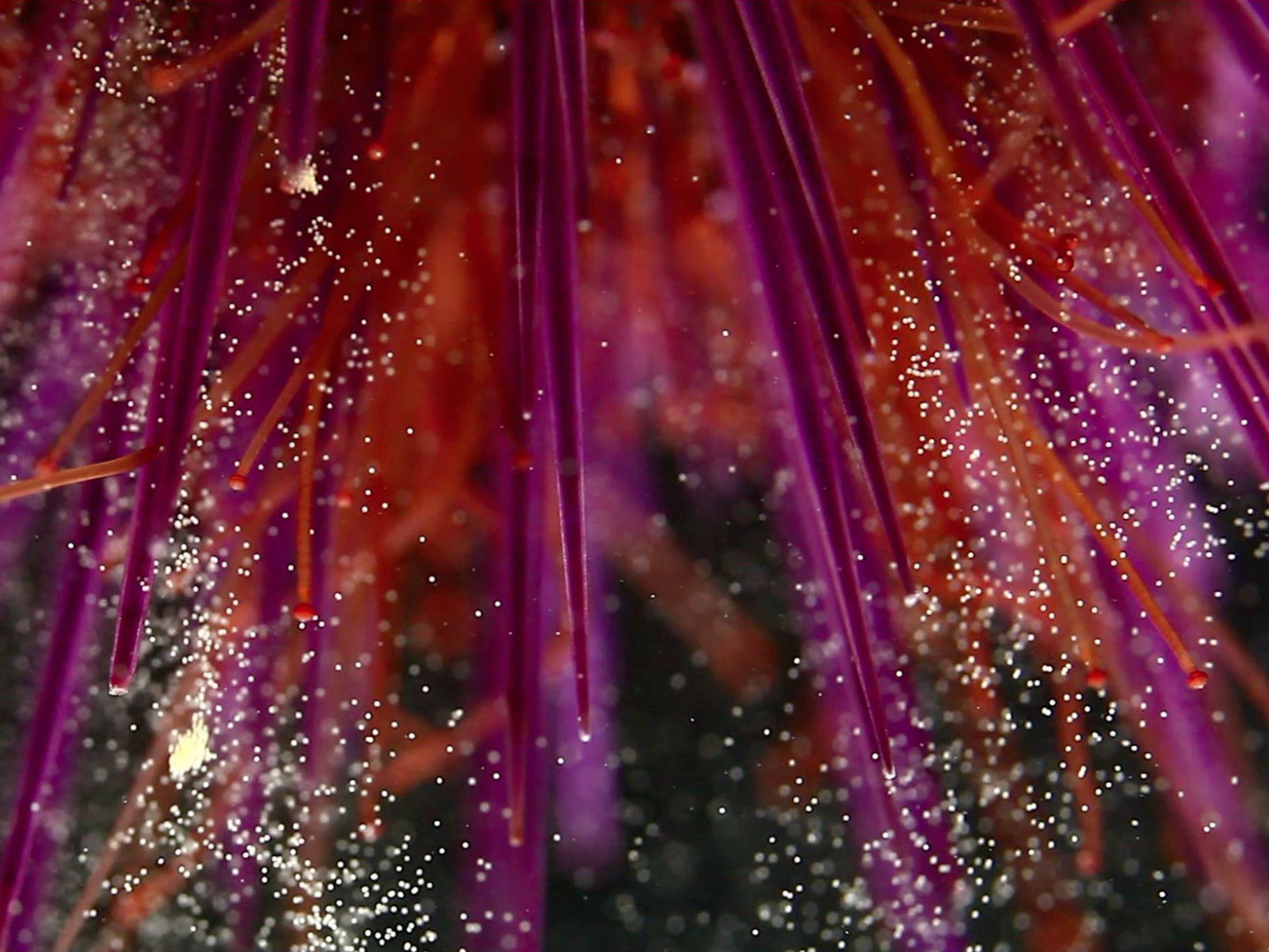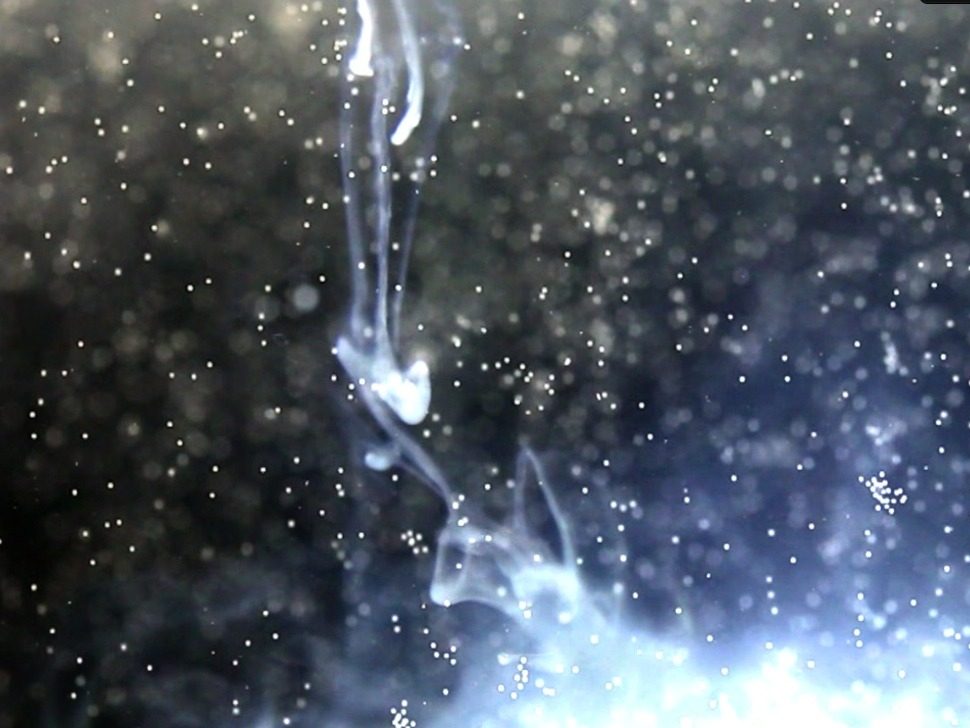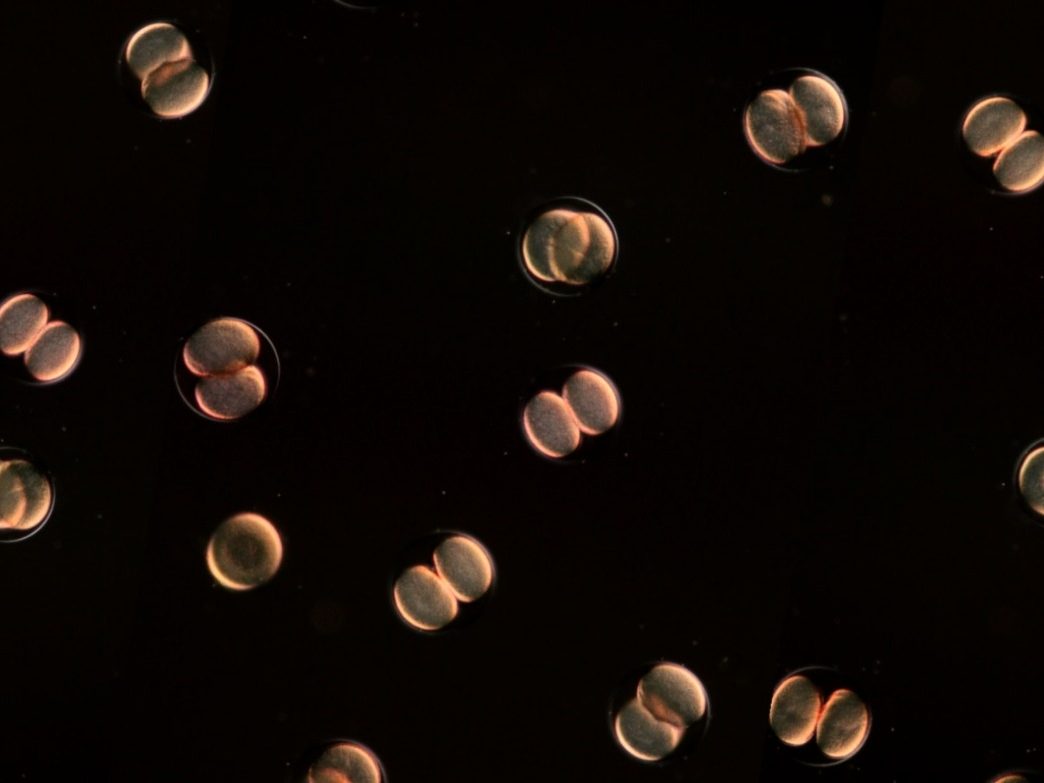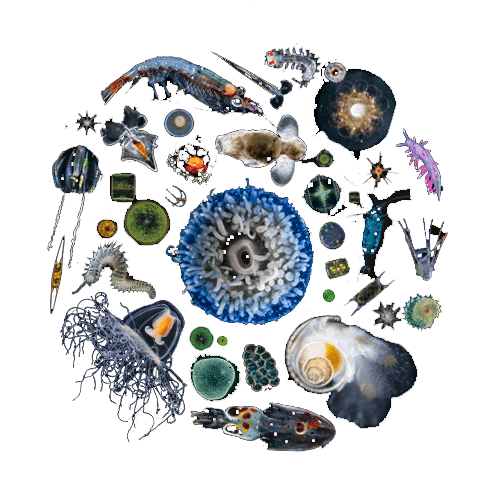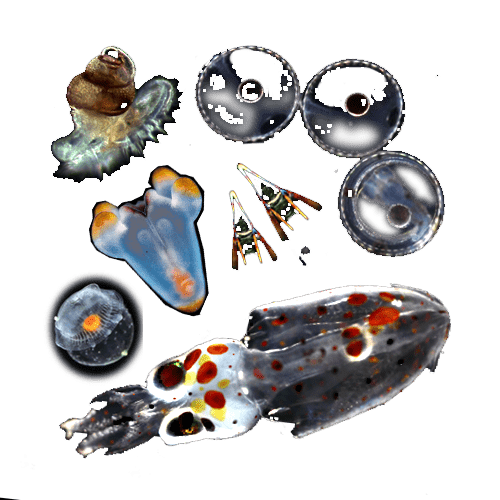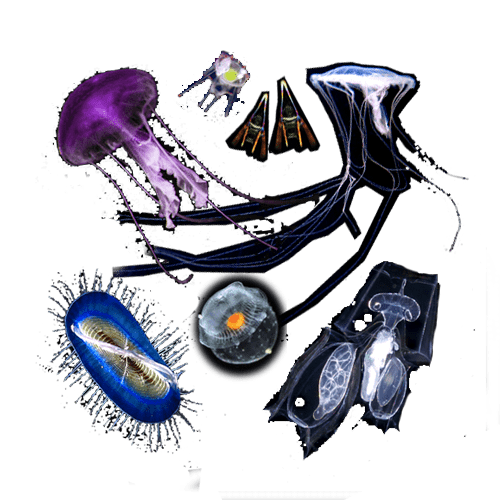Photos
Narration
Sea urchins are slow moving marine creatures grazing on algae covered rocks. They have colorful spines and a multitude of tube feet. Few people know that urchins go through a graceful larval stage – the pluteus – barely visible to the naked eye. The pluteus larvae drift with other planktonic creatures and are a favorite food for fish, shrimps and crustaceans.
Great quantities of these larvae are needed for the species to survive. Sea urchins are champions when it comes to producing large numbers of embryos. They release millions of eggs and billions of spermatozoids in the open sea, generally with the full moon or just before a storm. Fertilization in the open sea gives rise to large populations of embryos developing in perfect synchrony. No wonder sea urchins have been used in laboratory research for more than a century!
In a single day, the egg becomes a blastula, a ball of cells covered with cilia. Soon the ball hollows out, forming the gut of a gastrula. A mouth opens, the embryo starts feeding and turns into a pluteus larvae. Inside the pluteus a skeleton made of calcium carbonate crystals forms delicate iridescent spicules.
Propelled by rows of ciliated cells, the week-old pluteus moves around, creating currents that direct algae and small particles to its mouth. A baby urchin then grows inside the pluteus. The baby soon outgrows and digests its mother. This metamorphosis frees the young urchin on its journey.
Share this on
Production
CNRS
Original Idea
Christian Sardet
Director
Noé Sardet
Texts
Christian Sardet
Images
Sharif Mirshak, Noé Sardet, Christian Sardet, Flavien Mekpoh
Editing
Noé Sardet
Voice
Gregory Gallagher
Sound Engineer
Noé Sardet
Creative Commons Licence :
Attribution Non-Commercial
No Derivative

